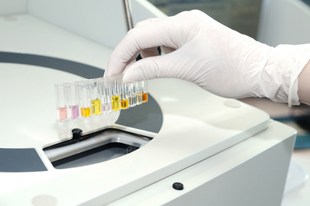Erectile Dysfunction: Future Treatment Options
Erectile dysfunction (ED) is a major public health problem that affects the quality of life of men and their partners. ED is the persistent inability to achieve and/or maintain an erection sufficient for sexual intercourse. Affecting around 1 million Australians and many worldwide, this condition has an undisputed impact on a man’s self-esteem and overall quality of living.
According to recent research, ED affects 50% of men over the age of 40 years and one large study, based in the United States, found that 25% of men aged 40 – 70 had a moderate degree of ED. Furthermore, ED is associated with heart disease, hypertension, depression, and diabetes (Cohan & Korenaman, 2001; Gonzalez-Cadavid & Rajfer, 2004; Lippi et al., 2012). This is why many attempts have been made to identify genetic predictors for this condition.
The Two Types of ED
There are two types of ED: vasculogenic ED and neurogenic ED. Corporal veno-occlusive dysfunction (CVOD) is a form of vasculogenic ED, and it is caused by impairment of smooth muscle relaxation in the cavernosa of the penis. CVOD occurs in two thirds of the cases of ED, with neurogenic ED occurring in the remaining third.
Neurogenic ED is related to defective nitrergic neurotransmission at the spinal level, the hypothalamic area, or at the penile nerves. This means that there is alteration in signal transmission. Neurogenic ED is caused by insufficient nitric oxide (NO) synthesis and impairment of nitric oxide regulation by protein effectors, or by loss of cells (apoptosis) caused by the induction of inducible nitric oxide synthase and the production of peroxynitrite (Gonzalez-Cadavid & Rajfer, 2004; Lopushnyan & Chitaley (2012).
Gene Therapy
Current therapy for ED includes androgen replacement, sildenafil (Viagra), intracavernosal and transurethral alprostadil, vacuum tumescence device, and penile prosthesis surgery (Cohan & Korenman, 2001). However, some experts believe that gene therapy is on the way.
Gene therapy to the penile corpora cavernosa has been effective in improving ED in aging rat subjects with both neurogenic ED and CVOD. Researchers have also successfully tested cDNA constructs for other genes involved in the control of penile erection.
Experts believe that gene transfer into the penis of men may be available to those with ED soon (Gonzalez-Cadavid & Rajfer, 2004). The majority of research investigates genetic polymorphisms (variants) of known pathways mediating erection. A comprehensive literature review of ED and gene predictors in humans and animals compared the frequency of specifically predetermined genetic polymorphism in men with ED to that of controls. Few of the same variants were persistently replicated. This lack of persistently replicated results of candidate gene studies was attributed to different patient ethnic backgrounds, small sample size, and variations in ED etiology.
Genetic Markers
A recent publication in the Journal of Radiation Oncology reported 12 genetic markers connected to sexual dysfunction in males treated with radiation following a blood test affirming prostate cancer. The scientists of the Mount Sinai School of Medicine identified these markers after evaluating tests of hundreds of patients who had received radiotherapy for prostate cancer. These researchers believe this will help doctors predict when individuals could develop ED from radiotherapy.
Current biochemical markers for ED are nitric oxide (NO), endothelin (ET) and asymmetric dimethylarginine (ADMA). Few genetic markers are consistently associated with ED, making further research necessary to determine gene therapy for ED (Lippi et al., 2012).
A New Topical Treatment in the Works
The Hybrid Nanoparticle technology, developed by Makefield Therapeutics in 2009, delivers NO locally and is being evaluated as a topical treatment for ED. A hydrogel that contains silane nanoparticles releases nitric oxide over time in a controlled manner. Because NO is a potent vasodilator, able to dilate blood vessels to the penile tissues, it is an ideal way to treat ED. A topical treatment option would also allow men to avoid the uncomfortable side effects of most oral drugs. In animal studies, topical therapy with the nanoparticles produced visible erections in the rat model for ED. The Makefield company plans to advance research through Phase II trial and then participate in clinical trials (GEN Magazine, 2010).
References
- Cohan, P. & Korenman, S.G. (2001). Erectile dysfunction. The Journal of Clinical Endocrinology and Metabolism 86(6): 2391 – 2394. doi: 10.1210/jc.86.6.2391
- GEN Magazine (2010). Nanoparticles deliver nitric oxide locally. Retrieved on February 19, 2013 from: http://www.genengnews.com/gen-articles/nanoparticles-deliver-nitric-oxide-locally/3364/?kwrd=Erectile%20Dysfunction&page=1
- Gonzalez-Cadavid, N.F. & Rajfer, J. (2004). Molecular pathophysiology and gene therapy of aging related erectile dysfunction. Experimental Gerontology, 39(11 – 12): 1705 – 1712. Doi: http://dx.doi.org/10.1016/j.exger.2004.06.022
- Lippi, G., Plebani, M., Montagnana, M., & Cervelin, G. (2012). Biochemical and genetic marker of erectile dysfunction. Advances in Clinical Chemistry, 57: 139 – 162.
- Lopushnyan, N.A. & Chitaley, K. (2012). Genetics of erectile dysfunction. The Journal of Urology, 188(5): 1676 – 1683. http://dx.doi.org/10.1016/j.juro.2012.07.008
Last reviewed 26/Feb/2014
